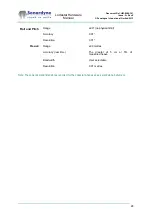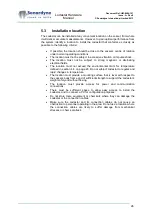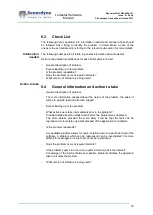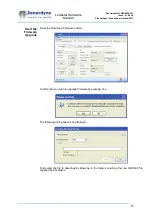
Lodestar Hardware
Manual
Document Ref: UM-8084-101
Issue: A– Rev 8
© Sonardyne International Limited 2013
29
5.5 Alignment
Course
alignment
When you install the Lodestar you should attempt to align to within ±2° of the
vehicle’s axes, see Figure 30 on page 58 for an explanation of the Lodestar
reference frame.
Alignment Marks The base plate of the Surface Lodestar has three reference edges which you can
use to align Lodestar with the vessel’s lubber line or with another reference
baseline. It also has three supporting feet that allow the base plate to rest on a
reference plane without rocking.
The Subsea Lodestar has four flats machined into the base plate that serve as
alignment references.
Mounting
Angles
If it is not possible to mount the Lodestar within the limits described above for
course alignment or if you wish to mount the Lodestar at other angles with respect
to the reference axes on the vessel, ROV or platform, the mounting angles will
need to be measured and configured on the Lodestar.
The Lodestar can be configured for any mounting angle that may be required.
An in-depth description of the theory and process for measuring and configuring
mounting angles can be found in the Lodestar AHRS Operation Manual UM 8084-
107. Also within this manual is an explanation for the effects of misalignments
between the vehicle and the Lodestar.
5.6 Connections
The connections necessary depend on the application.
Sonardyne supplies cables for connection to the Lodestar. The supplied cables all
have appropriate connectors at one end, and open tails at the other for direct
connection into external equipment or into a junction box on the vessel or vehicle.
The cables are all nominally 4 metres long as standard. Other cable lengths are
available on request.
Cables (including pin outs) are described in Appendix B.
See section 5.7 “NMEA Connections to Listening Equipment” below for
information concerning the connection requirements at the external receiving
equipment when supplying NMEA output sentences.
















































